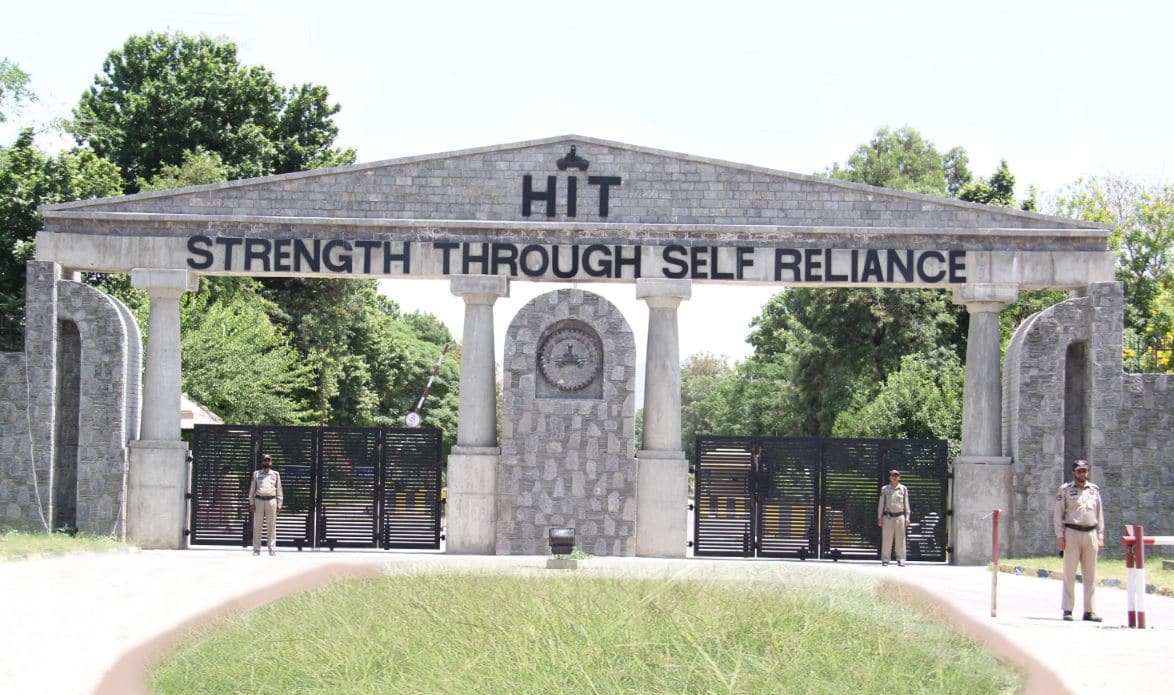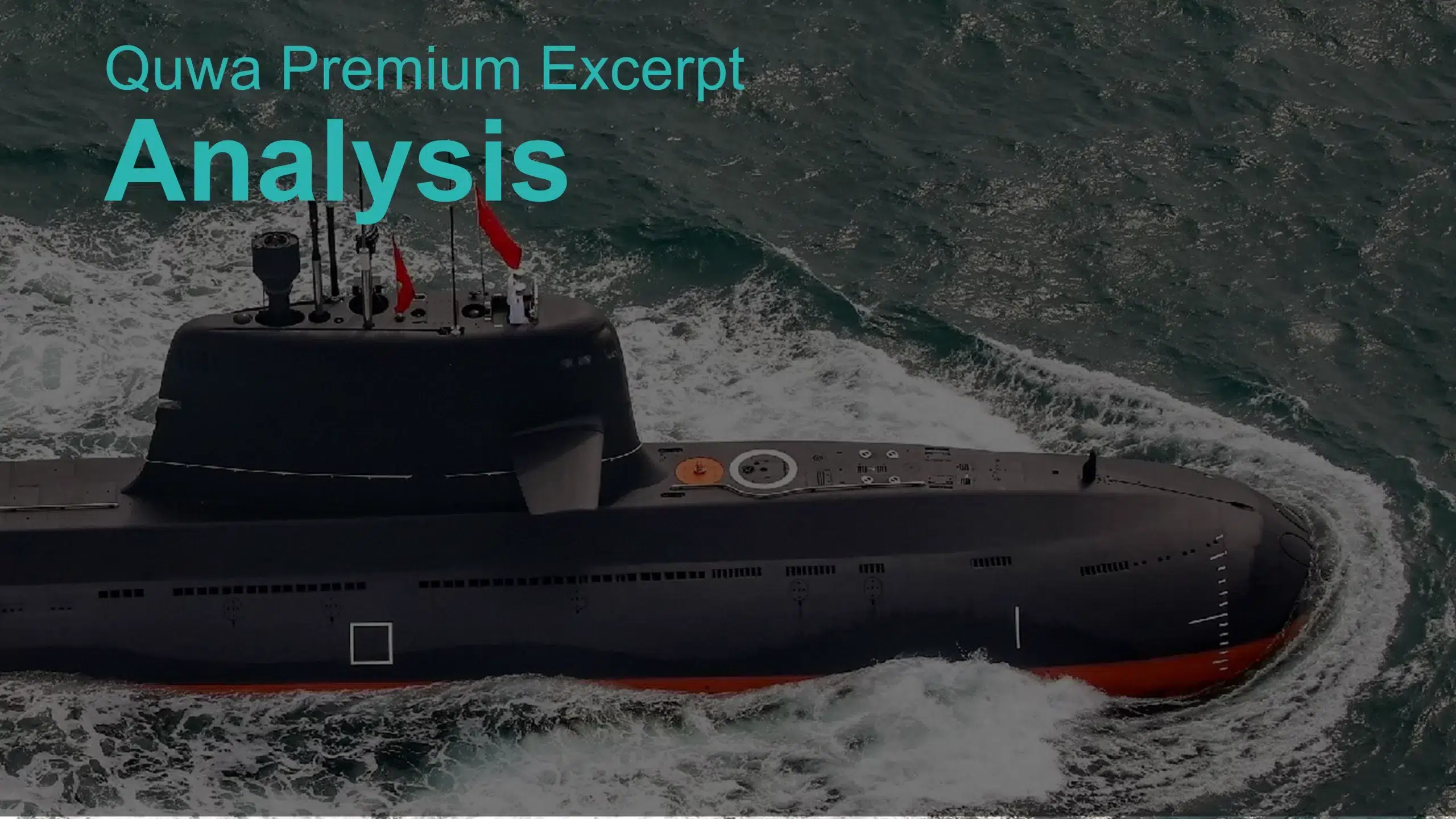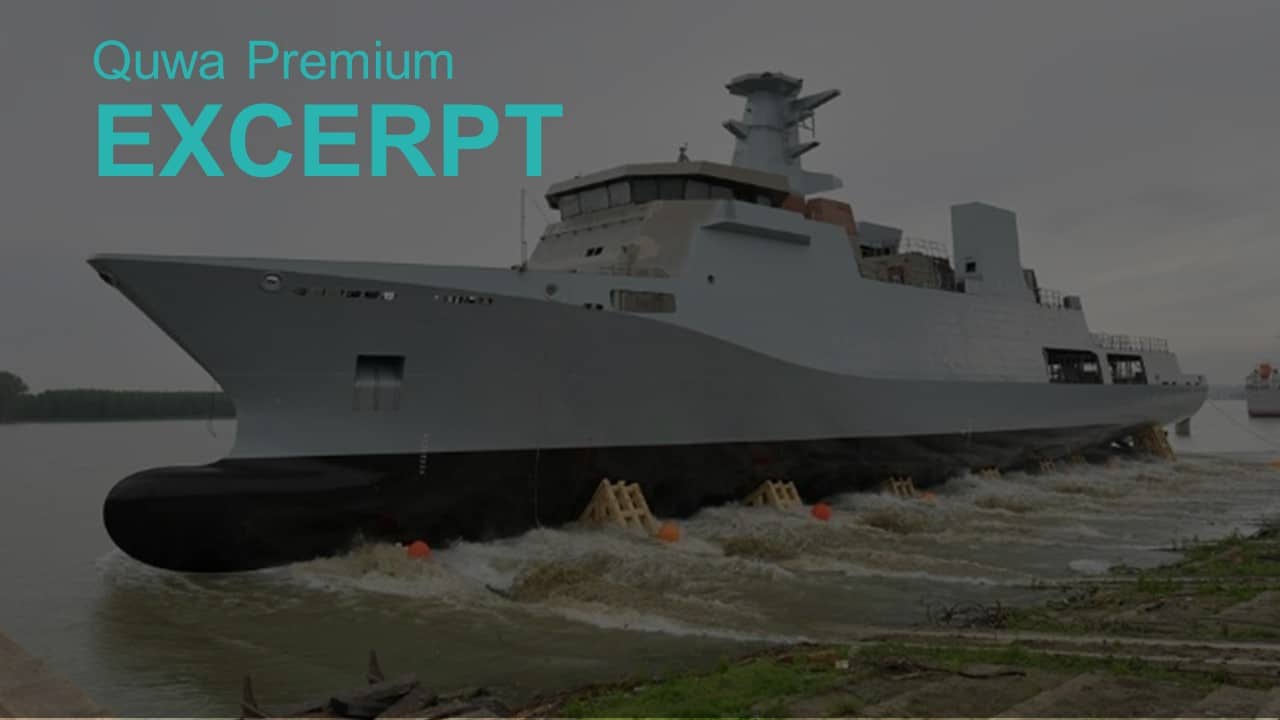2209Views 4Comments

DEPO’s Call for Coherent Export Policy & Pakistan’s Defence Product Development (FREE SAMPLE) Quwa Premium
The Defence Export Promotion Organization (DEPO) called upon the Government of Pakistan to establish a coherent policy framework for exporting defence products. The statement was conveyed by the Director of Coordination Brig. Gen. Waheed Mumtaz in the context of discussing Pakistan’s defence export efforts. Overall, Mumtaz called for focus on achievable markets, such as Africa, and effective messaging, stating that maintaining cordial foreign relations ties with a certain market need not translate into sales.[1]
On 28-29 November 2017, DEPO co-hosted a seminar, titled, “Pakistan’s Defence Industry: Export Potential, Challenges and Prospects,” with the Sustainable Development Policy Institute (SDPI) to begin the process of formulating a “draft strategy framework to secure (sic) desired share of defence industry products in global arms export market.” Though Pakistan managed securing defence exports worth $270 million U.S. in 2016-2017, it is a minute fraction of the $1.69 trillion in total global defence expenditure.[2]
Being a state with a national security-centric outlook, one focused on external threats and – since 2001 – internal threats, defence is an integral piece of Pakistani policy and economic development. To sustain its long-term procurement plans and keep its inventory serviceable, Pakistan invested considerably in raising production and maintenance facilities for armoured vehicles, aircraft and naval vessels. Marquee entities include Pakistan Ordnance Factories (POF), Heavy Industries Taxila (HIT), Karachi Shipyard & Engineering Works (KSEW), Pakistan Aeronautical Complex (PAC) and others.
Although it is true that commercial endeavours were not the primary purpose of these industry pieces, the reality that HIT, POF, KSEW, PAC and others are relatively minor players in the commercial market is on notice. With an uncertain near-term economic outlook, especially in terms of trade balance and foreign currency stock, it appears that for Pakistan’s defence planners, the high cost of modernizing for domestic needs requires an offsetting force of fiscal gain for sustainability.
However, although the requirement for an overarching policy will provide direction, it is important to understand the nature of Pakistan’s defence industry – i.e. it being granularly directed by the armed forces to support the armed forces. This is a factor in determining Pakistan’s product catalogue and investment in commercial activity (e.g. dedicated marketing and messaging), and an issue that must be examined as part of any substantive effort for increasing defence exports.
It is important to preface this discussion by acknowledging that the design, development and production of weapon systems necessitate layers of industry inputs, from surface level design that could involve the integration of various subsystems to the requisite human and technology capital to develop subsystems, especially complex technology, such as engines. When referring to products, Quwa is describing the final or resulting product of amalgamating subsystems and work that are both Pakistani and foreign. However, in a later portion of this article Quwa discusses various issues relating to domestic subsystem production.
Product Development in Pakistan
The primary purpose of HIT and PAC products, such as the al-Khalid main battle tank (MBT) and PAC JF-17 Thunder multi-role fighter, is to provide the Pakistani armed forces with affordable solutions to fulfil their mainstay inventory requirements over the long-term. Domestically producing the al-Khalid MBT and JF-17 allows Pakistan to channel a substantial portion of its defence expenditure in its local economy, thus saving on foreign-currency outflows and (where local labour and material costs are a factor) direct cost.
The HIT al-Khalid and PAC JF-17 are direct results of armed forces requirements. Yes, supplier products generally reflect demand of the market, but in Pakistan’s case, the products themselves are granularly designed and made by the armed forces. For example, the PAF routinely states that it is “the only air force in the world that produces its own fighter aircraft.” The al-Khalid and JF-17 were designed in direct accordance to Army and Air Force requirements, respectively. HIT and PAC did not submit proposals in a commercial sense, but rather, the Army and Air Force had directed the design of their respective weapon systems. In turn, the product development track of each weapon system, such as upgrades, modifications or new variants, have been a result of service requirements foremost. This is also evident in POF, which manufactures Heckler & Koch (HK) small-arms – i.e. HK G3, MP5 and MG3 – under license. POF’s efforts to upgrade its product catalogue currently runs in close concert with the Pakistan Army’s long-term rifle requirement, any product change will likely occur based on the Army’s selection (assuming one occurs).
Regarding KSEW, it is difficult to describe its naval product catalogue as marketable – F-22P frigate and Agosta 90B production were one-unit projects, be it final assembly or co-production with the original equipment manufacturing (OEM). If the Pakistan Navy (PN) does not issue additional orders (or if the OEM is not offering parts for new units), then these would have to be removed from the product catalogue. Granted, the naval sphere provides substantially less in terms of scale, and in the case of a fiscally constrained state such as Pakistan, it is difficult to sustain a long-term production without Pakistan committing to a sizable long-term order, which necessitates assured funding access over that period (not a luxury typically available to the PN). However, in contrast to other shipbuilders, KSEW does not have a portfolio of proposed naval products or designs, be it for domestic use or export. For its recent acquisition efforts, the PN consulted ship designers in China, Turkey and the U.S.
In general, Pakistan’s state-owned defence vendors – i.e. POF, HIT, PAC and KSEW – operate like weapon-manufacturing armories as opposed to traditional commercial players. In fact, the general approach to exporting arms for each of these vendors, especially POF and HIT, has been to meet domestic needs first and then offer the surplus output and/or capacity for export orders. For example, in its November 2017 hearing with the Pakistani Senate’s Standing Committee on Defence Production, HIT clearly stated that it was not entitled to undertake commercial activity. Its exports can only come from surplus capacity. In effect, POF et. al are not traditional commercial entities, so their relatively limited impact on the global defence market is to be expected, especially if product development efforts are inseparably linked to armed forces requirements and direction. While sufficient for domestic service requirements (obsolescence issues notwithstanding), such product catalogues may not respond to market expectations (which need not agree with the Pakistani armed forces’ conclusions for defence or security problems).
Pakistan’s Export Market
Pakistan’s main defence export market is the Middle East, particularly Saudi Arabia. In 2016, Saudi Arabia had imported small-arms and ammunition from POF worth $81 million. Then POF Chairman Lt. Gen. Omar Mahmood Hayat told the National Assembly’s Defence Production Committee, “Saudi Arabia remains the biggest importer of arms and ammunition from Pakistan.”[3] Likewise, PAC can credit its sales growth to the Super Mushshak trainer, which has seen recent orders from Qatar (8), Azerbaijan (10) and Turkey, the latter being the largest overseas adopter of the Super Mushshak with 52 aircraft on order. PAC is currently fulfilling those orders alongside an order of 10 from Nigeria. HIT and KSEW did not register overseas sales in recent years for armoured vehicles or naval warfare solutions, respectively. In effect, Pakistan’s recent defence exports have been of low-cost products, which necessitate high-volume to provide a substantive profit (in the broad picture of Pakistan’s foreign-currency exchange flows).
In terms of higher-value exports, PAC does manufacture and supply 58% of the JF-17’s subassemblies for all orders, including third-party exports. PAC’s inputs include the JF-17’s ailerons, trailing-edge and leading flaps, inboard and outboard wings as well as horizontal and vertical stabilizers.[4] Growth is currently being driven by an order from the Myanmar Air Force, though PAC is making efforts to finalize additional sales, particularly in Nigeria and Azerbaijan. It should be noted that the JF-17 is not PAC’s first stint at supplying subassemblies, it also supplies 18% of the K-8 Karakoram airframe (i.e. horizontal stabilizer, tail-plane, front fuselage and engine front cowling).[5] Having partnered with the Aviation Industry Corporation of China (AVIC) on the JF-17 and K-8, PAC is connected to China’s defence sales activities in those programs, accruing subassemblies work provided it and/or AVIC secure sales. However, AVIC also offers alternative platforms that could compete with the JF-17, such as the FC-20 (J-10A) and L-15. If AVIC secures sales for those platforms, then PAC will not benefit from subassemblies work as it is not involved in those programs.
Pakistan’s Ministry of Defence Production (MoDP) had set a defence export target of $1 billion by 2019.[6] However, a significant challenge with such forecasts is the variance caused by isolated and/or inconsistent large orders from one or two customers. For example, in 2015-2016 Saudi Arabia’s purchases from POF enabled POF to touch $100 m in exports, but Riyadh did not follow-up with an order of that size from POF in 2016-2017, leaving its exports for 2016-2017 at $67.73 million. Likewise, PAC just benefitted from a large Turkish Super Mushshak order, but once that is complete, it would return to the average of selling incremental batches of under 10 (assuming it secures new orders). This inconsistency makes it difficult to provide a realistic long-term forecast, especially since key entities, such as POF, can regress from touching major milestones (e.g. $100 m in exports) year-over-year.
[1] Mushtaq Ghumman. “Two-day seminar on public-private partnership to begin on November 28.” Business Recorder. 22 November 2017. Accessed: 28 November 2017. URL: https://fp.brecorder.com/2017/11/
20171122237148/
[2] “Military expenditure.” Stockholm International Peace Research Institute (SIPRI). 24 April 2017. Accessed 28 November 2017. URL: https://www.sipri.org/research/armament-and-disarmament/arms-transfers-and-military-spending/military-expenditure
[3] Mateen Haider. “Saudi Arabia largest importer of Pakistani arms.” Dawn. 06 May 2016. Accessed: 29 November 2017. URL: https://
www.dawn.com/news/1256712
[4] Alan Warnes. “JF-17 Thunder – Pakistan’s Multi-Role Fighter: Cutting-Edge Capabilities at an Affordable Cost.” 2015.
[5] Alan Warnes. “Pakistan Aeronautical Complex” (Chapter 7). The Pakistan Air Force 1998-2008: A New Dawn. 2009.
[6] Ismail Dilawar. “Pakistan Looks to Aviation in Ambitious Defence Export Push.” Bloomberg Politics. 02 March 2017. Accessed: 29 November 2017. URL: https://www.bloomberg.com/news/articles/2017-03-02/pakistan-looks-to-aviation-in-ambitious-defense-export-push



4 Comments
by sami shahid
Pakistan should induct more APC’s and install remote controlled turret on APC’s (military version) like APC Saad & Dragoon. Even Al-Khalid 2 should be equipped with remote controlled turret. Only then other countries would buy these vehicles from Pakistan. Army & paramilitaries should induct locally manufactured MRAP vehicles like Hamza and Dragoon. POF can promote its new sniper rifles in South America and Middle East. Dual seat JF-17 would help a lot in this case while if the KSEW is really developing a mini nature sub marine then maybe in future some countries can buy that sort of sub marines from us.
by mazhar
May be it’s a typo, but I am curious. Since how long Pak Army created a Brig General rank?
by Amir Timur
Regardless of the armed forces’ requirements, certain regions will always remain prospectus for the intended defence exports target. For the POF, in case the modernization of production facilities is pursued soon, an upgraded catalogue will offer vast array of export opportunities. More and more nations are turning to modular solutions for the mainstay service rifles, and therefore a quality solution offered by Pakistan will likely see many buyers not just in the middle east and north Africa, but closer home in southeast Asia, and even the subcontinent’s neutral countries. In case there is a push from the army to proceed with localized manufacturing of ballistic vests or better yet, infantry combat systems, a niche market is available amongst relatively wealthier countries in such regions. The idea of smart munitions has also not been played around with, but with emerging trends, in the long term, this might have to change.
Similarly, the HIT can also tap on the market for armoured mobility solutions. For most part, the Heavy Industries tend to focus on their tasks to provide viable heavy armour solutions instead. But using the formula of commonality, credible MRAP and AFV systems can also be produced.
For the PAC, to compete in the fighter market is frankly an uphill task. The idea of tailoring platforms such as the Thunder to a foreign customer’s requirements is not viable. But coming to turboprop COIN aircraft, jet trainers etc., it can certainly work more towards achieving sales orders.
As far as the KSEW goes, it is indeed a sparsely funded entity and will likely cater to only the PN’s need in the future as well.
If Pakistan’s defence production planners were to frame a two pronged and long term strategy, I expect more results to yield. First priority must be to enhance indigenous manufacturing capabilities, in lieu with the military’s requirements. The intention behind the aforementioned entities has been that since inception. But it is this push for indigenization that can be leveraged to achieve the second objective to secure exports. Yet unlike the present status quo, exports need not be secured only on basis of surplus capacity. Given the emerging requirements, major iterative upgrades on existing platforms and the development of newer solutions can definitely result in Pakistan producing a wide array of newer generation subsystems and technologies. If such technology is acquired, and worked upon by building an innovative technical base in the country, Pakistan can not only increase sales to the markets pointed out above, but venture into newer ones with competitive solutions. Such an ambition is certainly an uphill task and more of a long term project to build an internationally credible military industrial complex, but has convergence with the countries national interests. For countries marred with genuine strategic anxieties and vulnerabilities on either flank, coupled with a host of threats to internal security, defence requirements are ever increasing to ensure independence of foreign policy and prevention of sporadic violent conflict. Therefore, the idea of production of solutions can be built upon by exploring markets with similar demands and bringing weapons industries to the fore as national champions.
by mazhar
Excellent, in depth article, touched all possibilities, shortcomings and lacuna in our defense production consistency, vision and export policies.